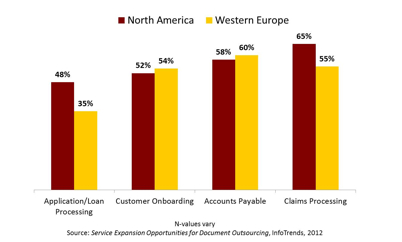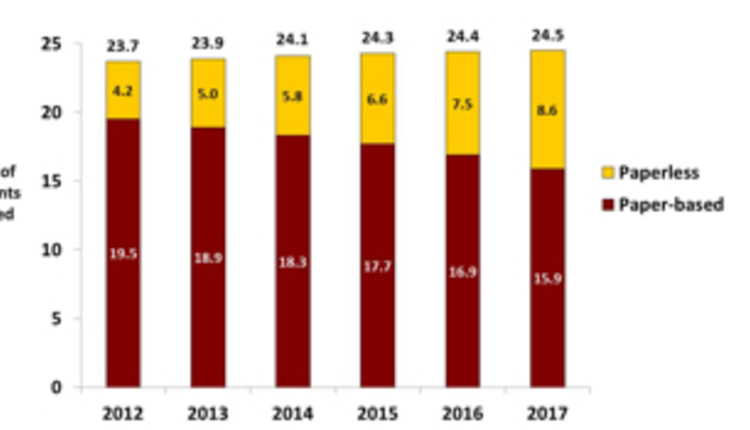It's that time of year again—where line-of-business
managers and company executives begin to lay out their business plans for the
following year. While there has always been pressure to identify new growth
opportunities, business plans of recent years have also targeted cost reduction
and returning focus to core competencies. If your company sends high volumes of
bills, statements and other critical customer communications, it is likely
that you have already outsourced bill production and mailing (or at least
considered it). The question for this planning cycle should be, "What new services can we engage a provider to
perform for us in 2013?"
One opportunity that businesses should consider for 2013 is
outsourcing end-to-end document-intensive business processes—also known as
document process outsourcing (DPO)—and the fastest-growing segment in each of our
latest document outsourcing market forecasts. Whereas traditional document
outsourcing engagements involve the outsourcing of a task (e.g., printing,
scanning, mailroom management) in support of a number of business functions,
DPO refers to the outsourcing of a document and data-intensive process,
composed of a number of tasks, in support of a single business process or
function.
The characteristics of a document process are:
- There is a specific input and a specific output.
For example, the input might be qualified sales leads and the output might be a
personalized set of promotional materials, which may include print and
electronic components. - The process encompasses a well-defined sequence
of activities, each adding value to the ultimate output. Following through on
the above example, these activities may include data management, creative
tasks, printing, web programming, email programming, distribution and
tracking. - There is a well-defined recipient of the output.
In this case, the prospective customer. - Most importantly, the specific business process
can be named. To complete the example, the business process is customer
acquisition.
Whether it is customer acquisition and onboarding, claims,
application, loan or invoice processing, accounts payable or another document
process, these business functions should be considered for outsourcing in 2013.
 |
Figure 1: Organizations Likely to Change Business Process Workflow within 12-24 Months Click here to enlarge image» |
InfoTrends recently surveyed over 500 outsourcing decision
makers at large companies in the US, Canada, France, Germany and the UK
for a soon-to-be-released study, entitled "Service Expansion Opportunities for Document
Outsourcing." For the organizations we surveyed, the top two business
process challenges across all countries were cost reduction and increasing
operational flexibility/agility. When we asked about the likelihood of
companies changing their business process workflows and technology in the next
12 to 24 months, we found that 47% of respondents in North America and 53% in Western
Europe planned to do so. Figure 1 highlights variation among particular
business processes that respondents were familiar with.
While cost reduction was the top business process concern
for the first three processes across both regions, the top concern for claims
processing was customer satisfaction in Western Europe and resolving errors and
missing info in North America.
While this is a small sample of the findings from our study, it is clear that many large organizations are
considering business process change in 2013 and beyond. The question for you
and your organization is, "Should that change be to outsource these processes?" If
so, you will be gaining access to business process experts and setting your
organization up for long-term, bottom-line cost savings. As you continue to
build your plan for 2013, reach out to your current outsourcing provider(s) and
ask them to outline new ways in which they can support your organization—you
might be surprised by the breadth of services that your traditional print and
mail providers are embracing today.
MATT SWAIN is
associate director of document outsourcing for InfoTrends, the leading worldwide market research and
strategic consulting firm for the digital imaging and document solutions
industries.
















